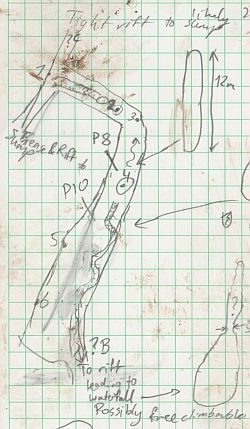Cave exploration is more data-intensive than any other sport. The only way to "win" at this sport is to bring back large quantities of interesting survey, and possibly photos or scientific data. Aside from the data collection requirements of the game itself, setting up a game (an expedition) of cave exploration often involves collection of personal information ranging from dates available to medical information to the desire to purchase an expedition t-shirt.
 If an expedition will only happen once, low-tech methods are usually adequate to record
information. Any events that need to be recorded can go in a logbook. Survey notes must be
turned into finished cave sketches, without undue concern for the future expansion of those sketches.
If an expedition will only happen once, low-tech methods are usually adequate to record
information. Any events that need to be recorded can go in a logbook. Survey notes must be
turned into finished cave sketches, without undue concern for the future expansion of those sketches.
Recurring expeditions
However, many caving expeditions are recurring, and managing their data is a more challenging task. For example, let us discuss annual expeditions.
- Every year, for each cave explored, a list of unfinished underground leads (which we call "Question Marks" or "QMs") must be maintained to record what has and has not been investigated. Each QM must have a unique id, and information stored about it must be easily accessible to future explorers of the same area.
- Similarly, on the surface, a "prospecting map" showing which entrances have been investigated needs to be produced and updated at least after every expedition, if not more frequently. We call this "essentials.gpx" because it stops people getting lost.
When we have hundreds of explored shafts, and thousands of potential holes on the plateau, it is absolutely essential that we record holes we have already looked at.